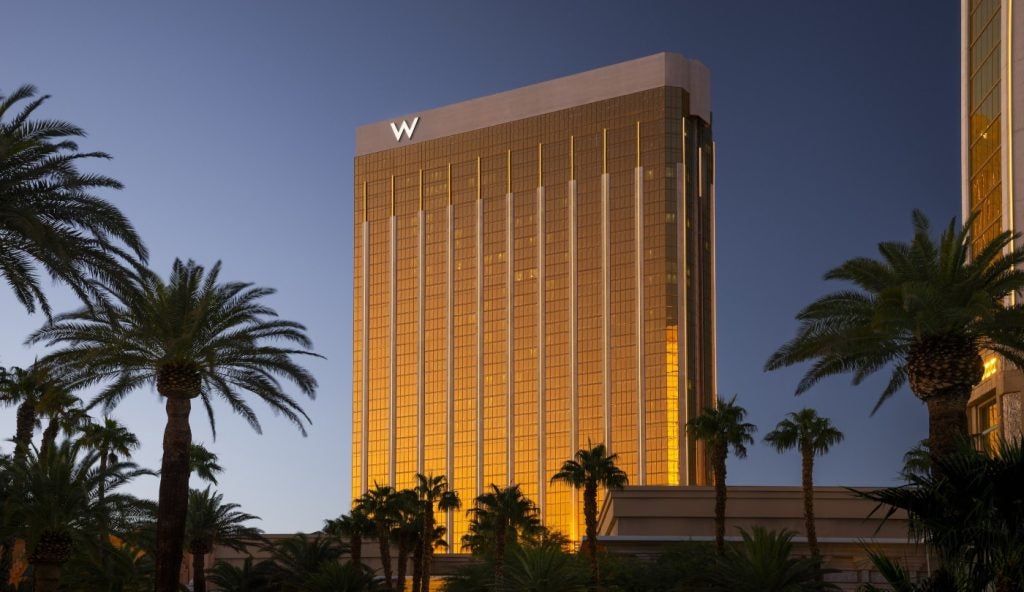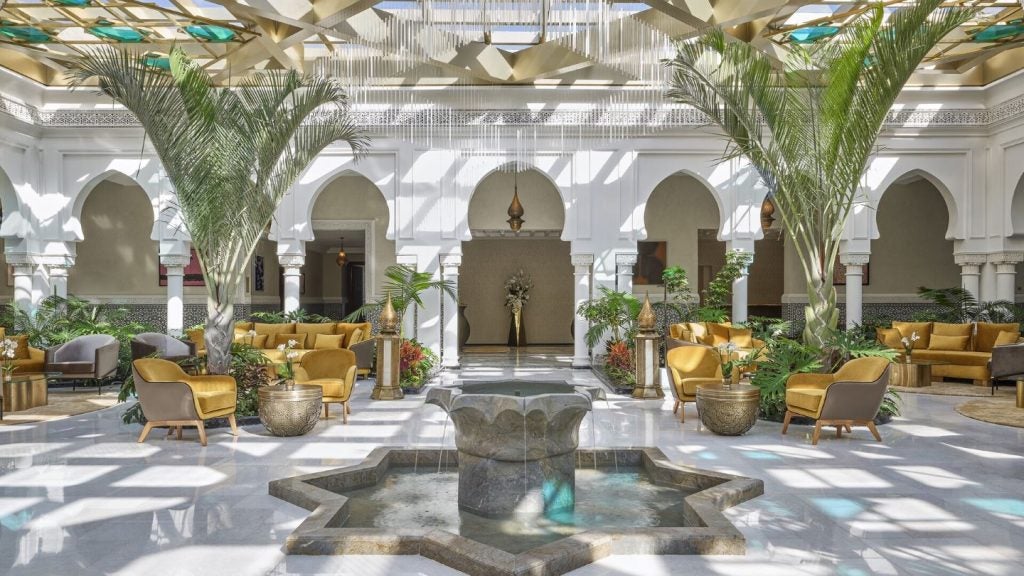
London may dominate media coverage of the UK hotel market, but hotels outside the capital also have good stories to tell, with some markets matching London’s growth achievements.
Latest results from the HotelBenchmark™ Survey by Deloitte for the first nine months of 2006 show some cities have seen double-digit increases in revenue per available room (revPAR) while the average growth rate across the UK regions stands at 4.1%, compared with the same period last year. Assuming the picture remains the same for the rest of the year, this will be the regional UK hotel market’s third year of growth.
Of the 20 cities tracked by the UK survey (excluding London), Aberdeen, Belfast, Liverpool and Reading are particularly strong. And in markets where performance has not been so hot, initiatives are under way to entice more visitors.
Meanwhile, the continuing strength of the UK hotel industry is attracting investors, and this year has been excellent for acquisitions. The latest indicators confirm a healthy and expanding tourism industry. According to Visit Britain, arrivals during the first eight months of 2006 were up 7% on the same period last year.
BELFAST MEANS BUSINESS
Belfast continues to perform well with the strongest revPAR growth in the UK year-to-September – up 15.9% to £52.
How well do you really know your competitors?
Access the most comprehensive Company Profiles on the market, powered by GlobalData. Save hours of research. Gain competitive edge.

Thank you!
Your download email will arrive shortly
Not ready to buy yet? Download a free sample
We are confident about the unique quality of our Company Profiles. However, we want you to make the most beneficial decision for your business, so we offer a free sample that you can download by submitting the below form
By GlobalDataContinued political stability, increased demand from the meetings, incentives, conventions and exhibitions (MICE) market, more air routes and city investment are driving hotel performance. Additionally, the city’s Visitor and Convention Bureau is promoting Belfast as the ideal choice for conferences and other events through a destination showcase roadshow, in London and Amsterdam in early 2006.
In April 2006, revPAR reached an all-time high at £66 when the city hosted the Rotary International in Great Britain and Ireland conference and the World Irish Dancing championships.
Low-cost airlines are also making Belfast more accessible. easyJet flies into Belfast International Airport from 17 destinations while Zoom Airlines, a low-cost long-haul Canadian carrier, has introduced direct flights from several Canadian airports. Continental Airlines also launched a daily direct flight from New York City to Belfast in 2006.
OIL INDUSTRY DRIVES ABERDEEN
Strong weekday business demand as a result of North Sea oil activities helped Aberdeen come a close second to Belfast, with revPAR increasing 13.4% to £50. This was driven by a 9.3% improvement in average room rates, with occupancy up 3.7%. If this performance continues, this will be the third consecutive year of growth and the second at double-digit levels.
The city’s airport is benefiting from the booming oil industry too. According to BAA, traffic during the first nine months of 2006 was up 9.7% compared with the same period last year and its commercial heliport is one of the busiest in Europe. An 86-room Holiday Inn in Aberdeen West is opening in November while a four-star 200-room hotel at the Aberdeen Exhibition and Conference Centre will open in 2008.
According to the Department of Trade and Industry, applications for North Sea exploration and production are at a 35-year high, so Aberdeen should be a magnet for some time.
LIVERPOOL’S APPEAL
Liverpool has seen revPAR increase by 8.7% this year. Although this is a good result, it cannot compete with its 2005 performance when it topped the UK regional chart with a massive 25.5% growth thanks to increases in both average room rates and occupancy.
During the first nine months of 2006, revPAR grew at a strong rate of 8.5% while occupancy increased by 0.2%. As the city prepares for its European Capital of Culture role in 2008, its appeal will undoubtedly continue.
READING ON THE BALL
Reading has enjoyed a strong increase in revPAR during the first nine months of 2006, up 7.9%. If improvements continue until the end of the year, it will match figures across the UK, giving the city’s hotels their third consecutive year of growth.
Reading has traditionally been driven by corporate demand because of its proximity to multinational companies, but the MICE and leisure markets are now expanding as well.
Reading FC is also enjoying a run of good fortune, both on and off the pitch. Fans are filling hotel rooms, helping Reading to achieve one of the highest revPARs in the UK at £60.
FRENCH CONNEXION
Unfortunately, it has not been a good year for every city. Nottingham, Leeds, Sheffield and York have not done so well. There are several factors behind this, in particular the issue of new room supply, which is impacting all markets.
Nottingham not only has the lowest revPAR in the UK at £33, it has also seen the largest fall during the first nine months of the year – 7.4% compared with the same period last year. New openings in 2005 and early 2006 have added 500 new hotel rooms, which the city is struggling to absorb.
To combat this problem, East Midlands Tourism is running a scheme with bmibaby and Nottingham East Midlands Airport to attract more visitors from Paris, a key source market.
CAMPAIGN TO REVERSE TREND
York, Leeds and Sheffield generated some of the UK’s lowest revPAR levels, experiencing declines in 2006.
In York revPAR was down by 0.3% during the first nine months of 2006. In Leeds the drop was 1.5%. If business in Leeds doesn’t pick up considerably, hotels will see their second consecutive year of revPAR declines. Over-supply of rooms is an issue, as several hotels have opened over recent years.
Sheffield, meanwhile, has seen a turning point. If the market continues at the same pace, 2006 will be the first of significant revPAR decline since 1997. Although average room rates grew, occupancy dropped by 6.5%, leading to the second greatest revPAR drop in the UK at 3.1%.
Councils in Sheffield, Barnsley, Rotherham and Doncaster have formed a partnership to coordinate tourism activities through a destination management partnership. This has two objectives: to encourage UK visitors to increase their spending by 6% a year by 2008 and to drive up overseas visitors’ spending by 7% a year.
ATTRACTIVE ASSETS
A variety of portfolio and single asset transactions took place across Europe in 2006, with the UK leading the way. The most widely reported deal was Hilton Hotels Corporation’s acquisition of Hilton International for £3.3bn in February. This was a milestone in the company’s history, as the Hilton brand was reunited after more than 40 years.
Recently, the company sold two of its largest assets in the UK – the Hilton London Metropole and the Hilton Birmingham Metropole – to Tonstate for £417m. Hilton will retain the long-term management contract on both hotels.
Whitbread exited the four-star hotel sector in April, when it sold 46 hotels to Royal Bank of Scotland for £951m. The sale began in March 2005, when Whitbread set up a 50:50 joint venture with Marriott International, named Condor Overseas Holding, which held the hotels until a buyer was found. Marriott International retains the long-term management of the hotels under the JW Marriott, Marriott and Renaissance brands.
In August, Permira sold Travelodge – including its 279 budget properties in the UK – to Dubai International Capital for £997m. One month later, Permira re-entered the market by acquiring Principal hotels. Principal, which is being sold by Royal Bank of Scotland, has six four-star hotels in the UK, including The Russell in London and The George in Edinburgh.
Earlier in the year, Permira had also tried to acquire the De Vere Group, but was outbid in the £767m deal by Malmaison and Hotel du Vin chief, Richard Balfour-Lynn.
In September, London and Edinburgh Swallow Group went into administration, and the fate of its 146 hotels and inns throughout the UK remains uncertain. More recently, Piccadilly Hotels, a joint venture between Iranian businessman Robert Tchenguiz and aAIM, the property fund backed by Sir Alex Ferguson, bought the 16-strong Menzies Hotels chain for £180m from Nikko Principal Investments.
POSITIVE OUTLOOK
Analysts are predicting the UK economy will stay buoyant for the remainder of 2006, which bodes well for the hotel industry. The outlook is the same for early 2007, with further growth continuing to be driven by average room rates.
To ensure the UK remains a favoured destination, the first British Tourism Week will be staged in March 2007. This joint venture between VisitBritain and Ukinbound will encourage collaboration across the sector as the image of British tourism is brought up to date and redefined for the future.
Central to the week will be two events in Birmingham: VisitBritain’s British Travel Trade Fair and Ukinbound’s 30th Anniversary Convention. Meanwhile, planning for the tourism infrastructure needed to support the 2012 Olympics is moving ahead rapidly and we can look forward to some exciting developments across the industry.







